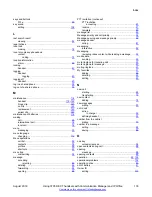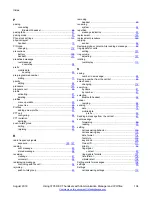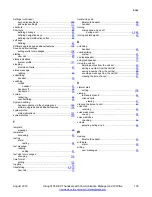
which can be determined by turning the equipment off and on, the user is encouraged to try to
correct the interference by one or more of the following measures:
• Reorient or relocate the receiving antennas.
• Increase the separation between the equipment and receiver.
• Connect the equipment into an outlet on a circuit different from that to which the receiver is
connected.
• Consult the dealer or an experienced radio or TV technician for help.
Note:
Privacy of communications may not be ensured when using this handset.
Related links
Regulatory Compliance Statements (USA and Canada only)
Exposure to radio frequency signals
This equipment complies with FCC radiation exposure limits set forth for an uncontrolled
environment. This device complies with FCC SAR limit of 1.6 W/kg. The maximum SAR value
measured is:
Head
Body
DH7–xxxx
0.042 W/kg
0.074 W/kg
The handset is designed to be worn with the display towards the body for best radio performance.
SAR testing is made with no separation, to approve the device to be carried close to the body.
This device must not be co-located or operating in conjunction with any other antenna or
transmitter.
Use of non-Avaya approved accessories may violate the FCC and IC guidelines for RF exposure
and should be avoided.
Related links
Regulatory Compliance Statements (USA and Canada only)
Precautions
Handset
• Avoid volume levels that may be harmful to your hearing. Exposure to excessive sound
pressure from a handset's earpiece or headset may cause permanent hearing loss.
• Low volume levels might result in missed alerts.
Precautions
August 2019
Using 3735 DECT handsets with Communication Manager and IP Office
127









































